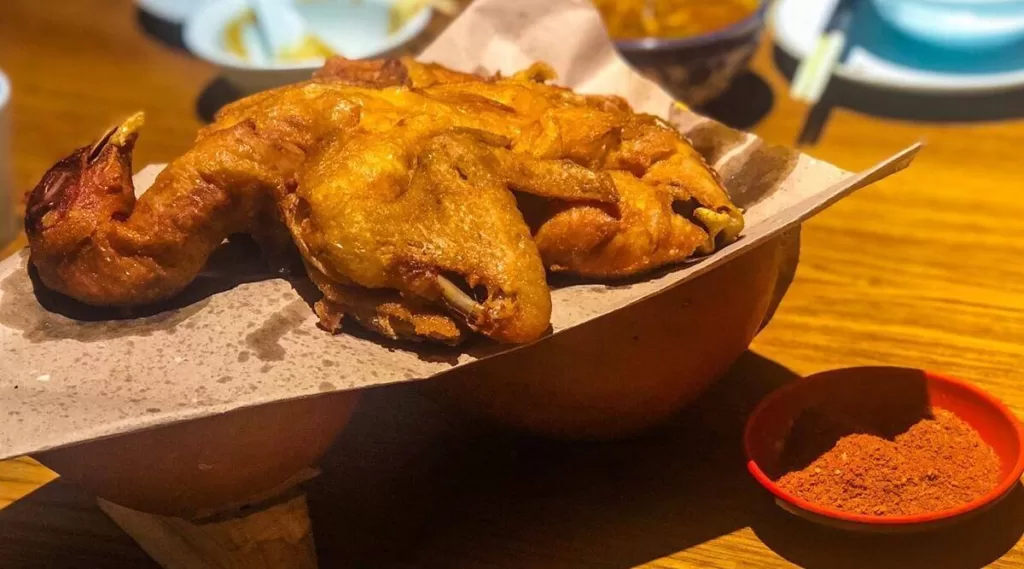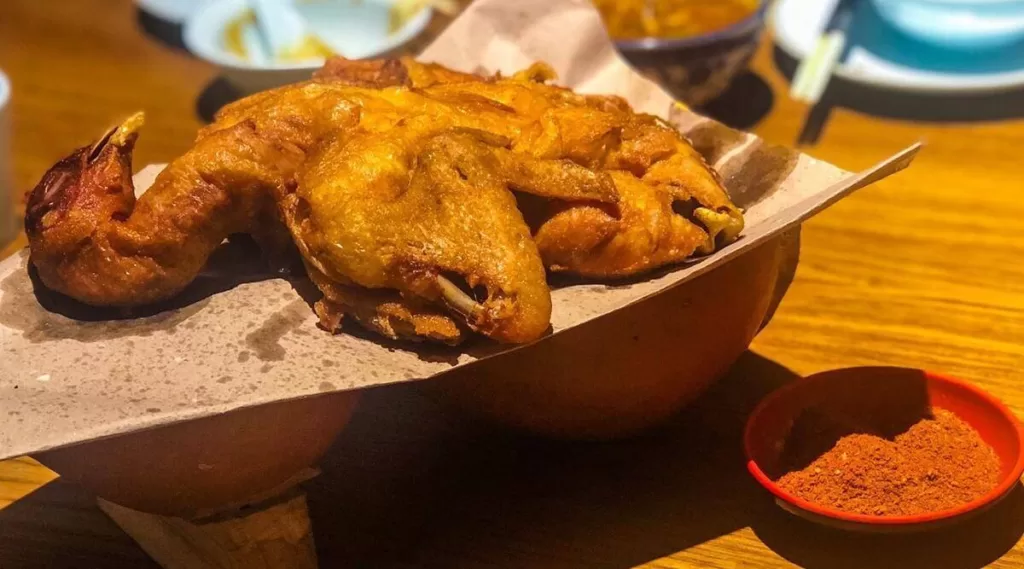Galinha de cabaça, Xi'an (西安葫芦鸡)


Gourd Chicken (葫芦鸡), also known as “Hulu Chicken,” is a traditional culinary masterpiece hailing from Xi’an, the capital of Shaanxi Province in China. This delectable dish traces its roots back to the Tang Dynasty, making it a timeless symbol of regional cuisine. The preparation of Gourd Chicken involves a meticulous process of boiling, steaming, and deep-frying, resulting in a dish that delights both the palate and the senses.
Preparation of Gourd Chicken
To create this exquisite dish, the journey begins with the careful selection of a plump and succulent chicken. The bird is thoroughly rinsed in clean water to remove any impurities or traces of blood. The next step is to truss the chicken with hemp threads to maintain its shape during the cooking process. As a large pot of water is brought to a boil, the chicken is gently placed inside and allowed to simmer for approximately half an hour. Once the chicken is tender and thoroughly cooked, it is carefully removed from the pot and placed in a large serving bowl.
The next stage of this culinary adventure involves seasoning the chicken. It is bathed in a rich and flavorful broth, complemented with ingredients like cooking wine, salt, soy sauce, scallions, ginger, star anise, and cinnamon. After this marination, the chicken is delicately transferred to a steaming basket to undergo the steaming process, infusing it with the intricate blend of flavors.
The final and most iconic step in creating Gourd Chicken is deep-frying. A generous amount of vegetable oil, typically derived from rapeseed, is heated to just the right temperature – approximately 80% of its smoking point. Once the oil is ready, the pre-steamed chicken is gently immersed in the hot oil bath. Expertly using a hand spatula, the chicken is meticulously rotated and monitored until it reaches a perfect golden-brown hue. At this stage, it is skillfully retrieved from the oil, drained to remove excess oil, and placed on a serving platter.
The result is a dish that captivates the senses with its dazzling golden-red color, crispy skin, tender meat, and an aromatic, mouthwatering flavor that leaves a lasting impression. Gourd Chicken embodies the art of culinary finesse, and it’s a treat for both the eyes and the taste buds. With every bite, the chicken is so succulent that it effortlessly falls off the bone. This dish is a treasure trove of essential nutrients, boasting high-quality protein and the essential saturated fatty acids that are vital for human health.
Legend of its Origin
Legend has it that Gourd Chicken originated during the Tang Dynasty at the household of Wei Zhi, a high-ranking official who served as the Minister of Rites. The story goes that Wei Zhi yearned for a dish of chicken with a crispy and tender texture. His quest led to a series of unfortunate events involving his chefs. The first chef’s attempt at steaming and deep-frying resulted in tough chicken meat, which infuriated Wei Zhi to the point of deathly consequences. The second chef’s efforts produced tender chicken meat but ended up in a shattered mess due to the repeated cooking processes. Wei Zhi’s wrath claimed another life.
The third and final chef was more resourceful. Learning from the previous failures, the chef decided to tie the chicken with a string before cooking. This ingenious innovation allowed the chicken to retain its shape while being prepared through the three-step process of boiling, steaming, and frying. Wei Zhi finally found satisfaction in this delectable creation, with the chicken resembling a gourd, hence the dish’s name, “Gourd Chicken.”
Over the centuries, this cooking technique was passed down from generation to generation, preserving the tradition of Gourd Chicken. Today, it remains a beloved and celebrated dish, not only in Xi’an but also in various parts of China, captivating the hearts and palates of all who have the privilege to savor this culinary masterpiece.